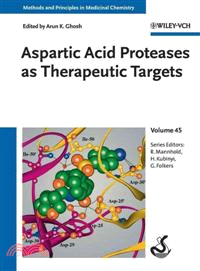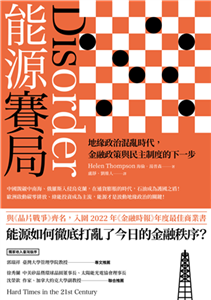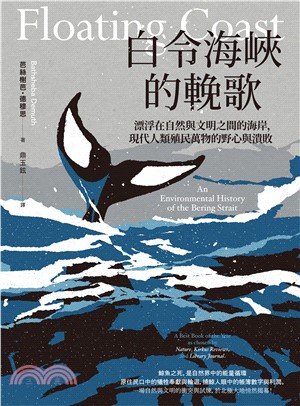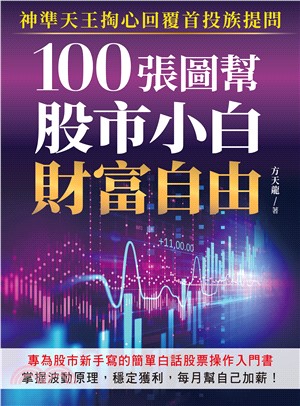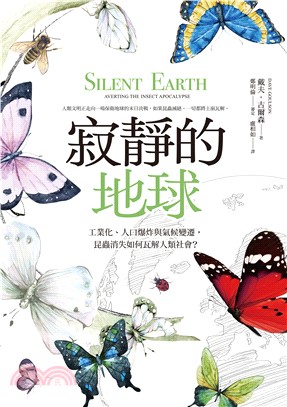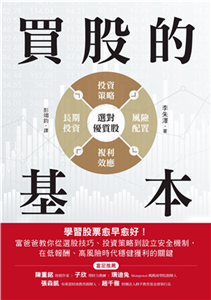Aspartic Acid Proteases As Therapeutic Targets
商品資訊
系列名:Methods and Principles in Medicinal Chemistry
ISBN13:9783527318117
出版社:John Wiley & Sons Inc
作者:Ghosh
出版日:2010/08/25
裝訂/頁數:精裝/640頁
規格:24.1cm*17.8cm*3.2cm (高/寬/厚)
商品簡介
A ready reference aimed primarily at professionals in the pharmaceutical industry, as well as for anyone studying proteases and their function.
作者簡介
目次
Preface.
A Personal Foreword.
Part One. Overview of Aspartic Acid Proteases.
1. Introduction to the Aspartic Proteinase Family (Ben M. Dunn).
1.1 Introduction.
1.2 Sequence Alignment and Family Tree.
1.3 Three-Dimensional Structure.
1.4 Conferences and Progress.
1.5 Exploration of the Active Sites of Aspartic Proteinase and Relation to Drug Discovery.
2. Aspartic Proteases: Structure, Function, and Inhibition (Jordan Tang).
2.1 Introduction.
2.2 Structures of Aspartic Proteases.
2.3 Catalytic Mechanism and Substrate Specificity.
2.4 Zymogen Activation.
2.5 Inhibition and the Development of Inhibitor Drugs.
2.6 Perspectives.
2.7 Information Resource on Aspartic Proteases.
3. Human Aspartic Proteinases (John Kay and Daniel Bur).
3.1 Introduction.
3.2 Human Aspartic Proteinases.
3.3 New Human Aspartic Proteinases.
3.4 Concluding Remarks.
4. Structure-Based Drug Design Strategies for Inhibition of Aspartic Proteinases (Jon B. Cooper).
4.1 Introduction.
4.2 Associated Disease States.
4.3 Development of Aspartic Proteinase Inhibitors.
4.4 General Strategies for Design of Renin Inhibitors.
4.5 Structural Studies of Renin Complexed with Inhibitors.
4.6 Structure-Based Drug Design for the HIV Proteinase.
4.7 Structure-Based Drug Design for Other Aspartic Proteinases.
4.8 Possible New Leads from Macromolecular Inhibitor Complexes and Zymogen Structures.
4.9 Conclusions.
Part Two. HIV-1 Protease as Target for the Treatment of HUV/AIDS.
5. HIV-1 Protease: Role in Viral Replication, Protein-Ligand X-Ray Crystal Structures and Inhibitor Design (Irene T. Weber and Yuan-Fang Wang).
5.1 Introduction.
5.2 HIV-1 and the AIDS Pandemic.
5.3 PR Interactions with Peptidic Inhibitors and Design of First Antiviral Inhibitors.
5.4 PR-Inhibitor Interactions Revealed in Atomic Resolution Structures.
5.5 The Challenge of Drug Resistance in HIV.
5.6 Future Perspectives.
6. First-Generation HIV-1 Protease Inhibitors for the Treatment of HIV/AIDS (Scott C. Virgil).
6.1 Introduction.
6.2 Structure of HIV Protease.
6.3 Design of Inhibitors.
6.4 Viral Resistance to First-Generation Protease Inhabitors.
6.5 Perspectives.
7. Second-Generation Approved HIV Protease Inhibitors for the Treatment if HIV/AIDS (Arun K. Ghosh and Bruno D. Chapsal).
7.1 Introduction.
7.2 Second-Generation Protease Inhibitors.
7.3 Conclusions.
8. Darunavir, a New PI with Dual Mechanism: From a Novel Drug Design Concept to New Hope Against Drug-Resistant HIV (Arun K. Ghosh, Bruno D. Chapsal, and Hiroaki Mitsuya).
8.1 Introduction.
8.2 Molecular Insights from Protein-Ligand X-Ray Crystal Structures of Early PIs and Design of Novel PIs Inspired by Nature.
8.3 Design of Novel Protease Inhibitors Containing Cyclic and Polycyclic Ether Templates.
8.4 Development of PIs Based Upon Our “Backbone Binding Concept” to Combat Drug-Resistant HIV.
8.5 Antiviral Activities, Resistance Profiles of TMC 126 (20), and Relevance to “Backbone Binding Concept’.
8.6 Selection of TMC114 and Its Subsequent Development to Darunavir.
8.7 High-Resolution X-Ray Structure of Darunavir-Bound HIV-1 Protease.
8.8 A Unique Dual Mode of Action: Darunavir also Inhibits Dimerization of HIV-1 Protease.
8.9 Optically Active Synthesis of Bis-THF Ligand for Initial Clinical Studies and Beyond.
8.10 Pharmacological Profile of Darunavir: ADME Properties.
8.11 Therapeutic Evaluation of DRV.
8.12 Conclusion.
9. Development of HIV-1 Protease Inhibitors, Antiretroviral Resistance, and Current Challenges of HIV/AIDS Management (Hiroaki Mitsuya and Arun K. Ghosh).
9.1 Introduction.
9.2 Targeting the Viral Protease.
9.3 The Role of PIs and the Challenges Faced by HAART.
9.4 “Boosting”: A Critical Modification to the Clinical Efficacy of PIs.
9.5 HIV-1 Variants Resistant to Conventional PIs.
9.6 New Generation PIs with Activity against Drug-Resistant HIV-1.
9.7 A Novel Modality of HIV-1 Protease Inhibition: Dimerization Inhibition.
9.8 HIV-1 Resistance to Darunavir.
9.9 When to Start HAART with Protease Inhibitors.
9.10 Conclusions.
Part Three. Renin as Target for the Treatment of Hypertension.
10. Discovery and Development of Aliskiren, the First-in-Class Direct Renin Inhibitor for the Treatment of Hypertension (Jeanette M. Wood and Jürgen Maibaum).
10.1 Introduction.
10.2 The History of Renin and Aliskiren.
10.3 The Renin-Angiotensin-Aldosterone System.
10.4 History of the Renin Inhibitor Project in Ciba-Geigy/Novartis.
10.5 New Concept Toward (P3-P1) Topological Peptidomimetric Inhibitors.
10.6 Early Preclinical Leads.
10.7 Scalable Synthesis Development of Aliskiren.
10.8 Properties of Aliskiren.
10.9 Clinical Efficacy of Aliskiren.
10.10 Conclusions and Outlook.
11. Evolution of Diverse Classes of Renin Inhibitors Through the Years (Colin M. Tice and Suresh B. Singh).
11.1 Introduction.
11.2 Mechanism and Structural Biology of Renin.
11.3 Screening and Animal Models.
11.4 Peptidomimetic Renin Inhibitors.
11.5 Nonpeptidomimetic Renin Inhibitors.
11.6 Conclusions.
Part Four. γ-Secretase as Target for the Treatment of Alzheimer’s Disease.
12. γ-Secretase: A Unusual Enzyme with Many Possible Disease Targets, Including Alzheimer’s Disease (Johan Lundkvist and Urban Lendahl).
12.1 Introduction.
12.2 Presenilin: From a Zymogen to the Subunit of a Complex Enzyme.
12.3 γ-Secretase: A Promiscuous Enzyme That Mediates Regulated Intramembrane Proteolysis.
12.4 Structure of γ-Secretase.
12.5 Mechanism of γ-Secretase.
12.6 Pharmacology of γ-Secretase.
12.7 Concluding Remarks.
13. γ-Secretase Inhibition: An Overview of Development of Inhibitors for the Treatment of Alzheimer’s Disease (Christopher L. Hamblett, Sanjiv Shah, Richard Heidebrecht, Jr., and Benito Munoz).
13.1 Introduction.
13.2 APP Genetics.
13.3 Amyloid Cascade Hypothesis.
13.4 γ-Secretase Inhibitors: Compounds and Clinical Results.
13.5 Notch-Sparing γ-Secretase Inhibitors: Compounds and Clinical Results.
13.6 γ-Secretase Modulators: Compounds and Clinical Results.
13.7 Conclusion.
Part Five. ß-Secretase as Target for the Treatment of Alzheimer’s Disease.
14. BACE: A (Almost) Perfect Target for Staving Off Alzheimer’s Disease (Sukanto Sinha).
14.1 Introduction.
14.2 Cell Biology Evidence for ß-Secretase.
14.3 BACE-Deficient Mice: Effect on Aß Production.
14.4 Other BACE Substrates.
14.5 BACE Structure and BACE Inhibitors.
14.6 Conclusions.
15. The Discovery of ß-Secretase and Development Toward a Clinical Inhibitor for AD: An Exciting Academic Collaboration (Jordan Tang, Lin Hong, and Arun K. Ghosh).
15.1 Introduction.
15.2 Discovery of Memapsin 2 and Its Identification as ß-Secretase (by Jordan Tang).
15.3 Design of the First Substrate-Based Inhibitors: A Remarkable Scientific Adventure Between Two Laboratories (by Jordan Tang and Arun Ghosh).
15.4 Crystal Structure of Memapsin 2 and Binding of Inhibitors (by Lin Hong).
15.5 Evolution of Memapsin 2 Inhibitors (by Arun Ghosh).
15.6 Perspective.
16. Peptidomimetic BACE1 Inhibitors for Treatment of Alzheimer’s Disease: Design and Evoluition (Ulrich Iserloh and Jared N. Cumming).
16.1 Introduction.
16.2 Substrate-Based (Peptidic) Inhibitors.
16.3 Peptidomimetic Statine and Homostatine Inhibitors.
16.4 Hydroxyethylamine-Based Inhibitors.
16.5 Other Peptidomimetrics.
16.6 Conclusions.
17. NonPeptide BACE1 Inhibitors: Design and Synthesis (Derek C. Cole and Matthew G. Bursavich).
17.1 Introduction.
17.2 Preliminary Peptidomemetic BACE1 Inhibitors.
17.3 Acyl Guanidine-Based Inhibitors.
17.4 Aminoimidazolone-Based Inhibitors.
17.5 2-Aminopyridine and Pyrimidine-Based Inhibitors.
17.6 Aminoimidazopyrimidine-Based Inhibitors.
17.7 2-Aminoquinazoline-Based Inhibitors.
17.8 Piperidine and Piperazine-Based Inhibitors.
17.9 Other Miscellaneous Scaffolds.
17.10 Conclusions.
Part Six. Plasmepsins and Other Aspartic Proteases as Drug Targets.
18. The Plasmepsins Family as Antimalarial Drug Targets (Adam J. Ruben, Yoshiaki Kiso and Ernesto Freire).
18.1 Introduction.
18.2 Plasmepsins In Vivo.
18.3 Plamepsins In Vitro.
18.4 Plasmepsin Family Structures.
18.5 Plasmepsin Inhibitors.
18.6 Conclusions.
19. Plasmepsins Inhibitors as Potential Against Malaria: Starving the Parasite (Sandra Gemma).
19.1 Introduction.
19.2 The Plasmepsin Family of Enzymes.
19.3 Inhibitors of the Plasmepsin Family of Enzymes.
19.4 Transition-State Isostere-Based Inhibitors.
19.5 Nonpeptidic Inhibitors.
19.6 “Double-Drugs”
19.7 Conclusions.
20. Fungal Asparatic Proteases as Possible Therapeutic Targets (Michel Monod, Peter Staib, Utz Reichard, and Olivier Jousson).
20.1 Introduction.
20.2 Biochemical Properties of Fungal Proteases (Table 20.1).
20.3 Phylogeny of Fungal Aspartic Proteases.
20.4 Production of Fungal Aspartic Proteases.
20.5 Biological Functions of Aspartic Proteases in Fungi.
20.6 Secreted Aspartic Proteases in Virulence of C. albicans.
20.7 Functions of Aspartic Protease in C. albicans Virulence Processes.
20.8 Secreted Aspartic Proteases in the Virulence of Candida Species Other Than C. albicans.
20.9 Secreted Aspartic Proteases During Infection by Opportunistic Filamentous Fungi.
20.10 Fungal Aspartic Proteases as Possible Drug Targets.
20.11 Conclusions.
Index.
主題書展
更多書展今日66折
您曾經瀏覽過的商品
購物須知
外文書商品之書封,為出版社提供之樣本。實際出貨商品,以出版社所提供之現有版本為主。部份書籍,因出版社供應狀況特殊,匯率將依實際狀況做調整。
無庫存之商品,在您完成訂單程序之後,將以空運的方式為你下單調貨。為了縮短等待的時間,建議您將外文書與其他商品分開下單,以獲得最快的取貨速度,平均調貨時間為1~2個月。
為了保護您的權益,「三民網路書店」提供會員七日商品鑑賞期(收到商品為起始日)。
若要辦理退貨,請在商品鑑賞期內寄回,且商品必須是全新狀態與完整包裝(商品、附件、發票、隨貨贈品等)否則恕不接受退貨。



